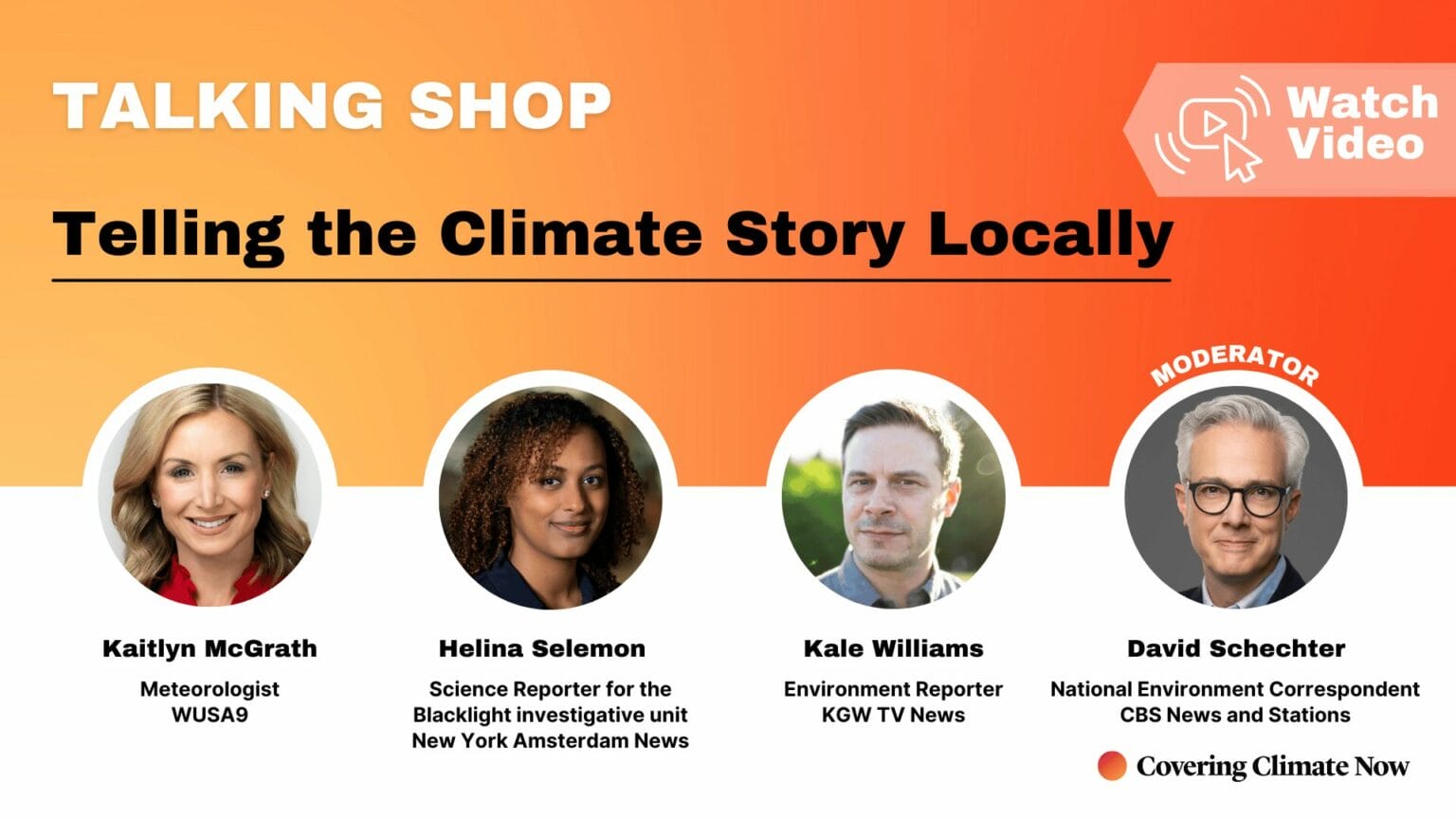Welcome to Locally Sourced, a biweekly Covering Climate Now newsletter for journalists working to localize the climate story. In each edition, we’ll suggest story ideas, offer reporting tips, and share example coverage to serve as inspiration. Vea la versión en español de “Fuentes Locales.”
Share this newsletter with colleagues and journalism students interested in localizing the climate story. Sign up for the biweekly Locally Sourced newsletter.
Story Spark: Back to School Is Hotter Than Ever
Back to school season is hotter than it used to be. As climate change ratchets up temperatures — extending warm seasons and making heat waves both more frequent and severe — outdated school infrastructure can’t keep up. Specifically, US schools that didn’t require air conditioning in previous decades, and so lack adequate cooling systems, are now dealing with classrooms so sweltering that it’s hard for students and teachers to concentrate.
Why It Matters
By 2025, 13,700 public school buildings in the contiguous US will require cooling that wasn’t necessary when temperatures were lower in 1970, according to analysis by the Center for Climate Integrity. Over the last 10 years, “cooling demand” during the back-to-school period has increased 34%, Climate Central reports. Some school districts release children early if classroom temperatures spike too high — like dozens of Philadelphia schools were forced to do last year in their first week back. Many schools, though, haven’t developed sufficient protocols.
Yet just sending kids home isn’t a long-term fix. Children released early might not have air conditioning at home either, and their parents might not have emergency childcare; they also lose a learning day. If the students stay in school, on the other hand, studies show that extreme heat makes learning nearly impossible. And, critically, children’s developing bodies are more vulnerable to heat-related health risks.
Story Examples
- In Concord, N.H., earlier this year, State Senator Becky Whitley sponsored a bill requiring schools to evaluate their readiness to handle extreme heat and determine upgrades needed to adapt to hotter temperatures, reports Jamie Staton for WMUR. One teacher reported that, during a heat wave, “I felt like my only job that week was to keep kids cool and occupied.”
- In New York State, legislators passed a bill that would block students from being in classrooms that are 88 degrees Fahrenheit and above, Alex Zimmerman reported for Chalkbeat. Governor Kathy Hochul has not signed it into law.
- Climate anxiety is rising in children, and learning how to talk about those fears is crucial for educators, Project Drawdown’s managing director Elizabeth Bagley told CBS News.
- In Raleigh, N.C., in 2023, moms pushed local schools to include climate change in their children’s classroom curriculum and improve sustainability practices, Liz McLaughlin reports for WRAL.
Reporting Tips
Madeline Will, Assistant Managing Editor at Education Week, shared reporting tips to help audiences understand how climate-fueled heat impacts K-12 students and what schools and school systems are doing about it.

Focus on the classroom experience. Do schools in your community have air conditioning? Many don’t! Talk to teachers and students about what it’s like to teach and learn in a hot classroom. Back up your interviews with research showing how heat negatively impacts student learning.
It’s not just hot classrooms. Consider recess: Are students playing on grass, asphalt, or black rubber? The latter two get dangerously hot. Is playground equipment metal, which can get hot enough to burn skin? Are there enough trees or shade sails to provide relief from the sun? And think about school commutes: Are students riding on a bus without air conditioning for extended periods?
Look into safety policies for student-athletes. Kids who practice and compete outside are particularly at risk of experiencing heat-related illnesses, such as heat stroke, which in the worst cases can lead to death. Experts say many states — especially those in regions with historically milder climates — need to strengthen heat-safety protocols for student-athletes. Are schools in your state keeping up to keep kids safe? (The Korey Stringer Institute is a helpful resource on this subject.)
Ask about school districts’ infrastructure plans. Are districts planning to update or repair their HVAC systems? It’s an expensive fix, but other infrastructure choices, like cool roofs, white roofing products, or double-paned windows, can help schools mitigate heat, too. Experts encourage districts to proactively plan for such updates, to have solutions in place before conditions get too extreme to bear. (UndauntedK12, a national nonprofit focused on school responses to climate change, is a good resource to get started.)
Consider the equity implications. It’s becoming more common for schools without air conditioning to cancel classes, or have students learn remotely, due to extreme heat. How does this affect students, teachers, and working parents? Again, keep in mind some students might not have air conditioning at home.
Resources
Key facts and visuals. Climate Central’s “Cooling Schools in a Hotter Climate” provides key facts and downloadable local data and graphics. Want to know how temperatures have changed during the back-to-school period in your area? This has you covered.
More vulnerable. A 2023 US Environmental Protection Agency report digs into the immediate and long-term consequences of extreme heat exposure on children’s developing brains and bodies, including reduced academic achievement. Particularly at risk are children of color, children from low-income families, children with limited English, children without health insurance.
Think like a policymaker. Yale Climate Connections shared advice from eight lawmakers for supporting climate education at the state level. Check out the list to jumpstart your thinking, including who could be a source.
Support Covering Climate Now
We’re working to help journalists worldwide improve and expand their climate coverage. Meet our staff and learn more about CCNow.
Before We Go…
Want more tips on how to localize the climate story? Check out CCNow’s recent webinar, “Telling the Climate Story Locally.”
Please send us your local stories where you’ve made the climate connection that might not be obvious to audiences. We’d love to consider them for Locally Sourced and our media trainings and social platforms. Email local[at]coveringclimatenow[dot]org.
Know someone who might be interested in this newsletter? Send Locally Sourced to a colleague!



